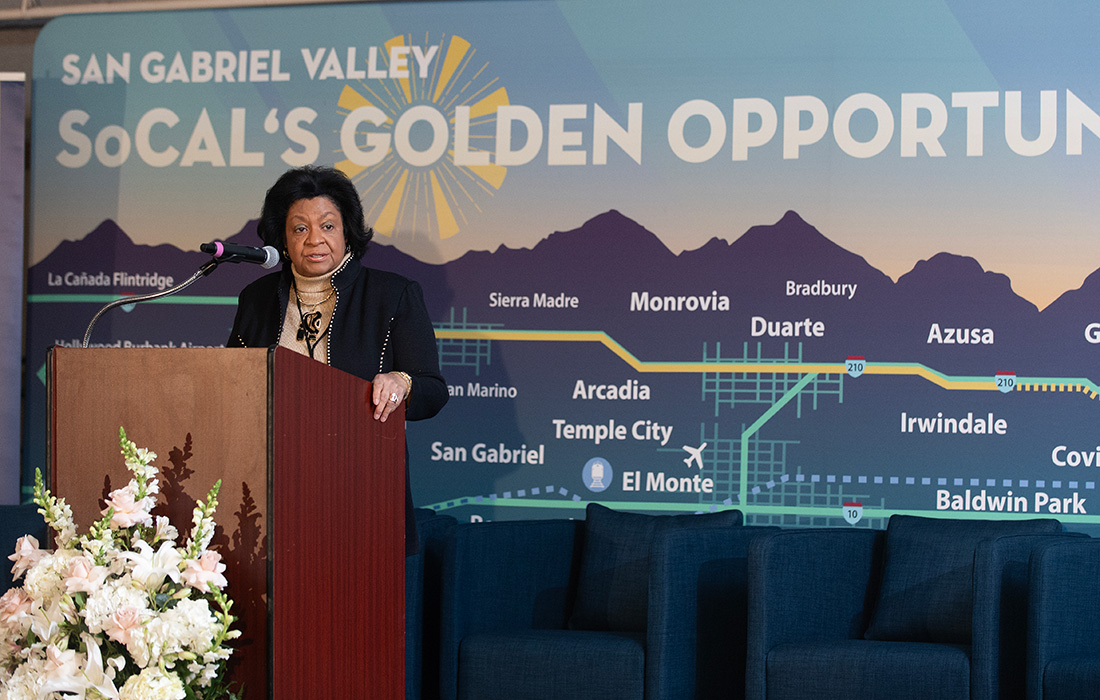2025 San Gabriel Valley Economic Forecast: Post-Wildfire Recovery and Economic Uncertainty

This year’s San Gabriel Valley Economic Forecast Summit will gather regional business leaders and elected officials to learn where the economy is headed in the aftermath of the devastating Eaton Fire. California State Insurance Commissioner Ricardo Lara will give a keynote address followed by a Q&A session.
Cal Poly Pomona and the San Gabriel Valley Economic Partnership will co-host the summit on March 20, 8:30-11 a.m., at the Industry Hills Expo Center Pavilion Hall in the City of Industry. The region’s economic outlook will be delivered by economists Anthony Orlando and Gerd Welke, professors of Finance, Real Estate and Law at the College of Business Administration.
The San Gabriel Valley economic forecast report for the first time introduces the San Gabriel Valley Leading Economic Index, which identifies the key economic indicators uniquely impacting the region. The index points to a likely slowdown in growth — with potential contractions in several industries, including housing production, construction and manufacturing — particularly due to a pullback in construction and macroeconomic factors such as fiscal austerity and tariffs.
Before the Eaton Fire, San Gabriel Valley’s economy displayed the fundamentals for a post-pandemic soft landing: healthy employment growth, subsiding inflation, steady housing prices, recovering real estate, a strong office sector, and progress in the manufacturing, hospitality and retail sectors. Now, the region faces a challenging road ahead as it grapples with the economic cost of wildfires, state austerity measures, and uncertainty from federal policies and tariffs.
While sectors like manufacturing and hospitality show growth, challenges like rising insurance costs and a glut of industrial properties loom large. The report emphasizes regional cohesion and community support in rebuilding, as housing shortages and disaster recovery efforts will require long-term collaboration.
The region faces a years-long road to recovery after the Eaton Fire scorched through more than 14,000 acres through Altadena and surrounding communities — the fifth deadliest fire in California history and the second most destructive wildfire in the state, razing more than 9,400 structures, affecting nearly 750 business whose 3,460 employees help generate $390.6 million in yearly revenue. The Los Angeles County Economic Development Corporation estimates that the combined damages from Eaton Fire and the Palisades Fire amount to a $9 billion loss to the county economy over the next five years.
“The impacts of natural disasters ripple across neighborhoods and regions,” said Orlando and Welke. “By working together as a region, we can create a force of resilience that underpins long-term economic success. It’s essential that we build for each other to ensure a strong and sustainable future for all residents of the San Gabriel Valley.”
Home to 1.8 million across 31 cities, the San Gabriel Valley — bounded by Pomona, Claremont and Diamond Bar in the east and La Cañada Flintridge, Pasadena and Monterey Park in the west — is powered by the healthcare, education, manufacturing, tourism and technology industries. The region is a magnet for international trade from the Pacific Rim, foreign investments, and expanding Asian entrepreneurship and working capital.





